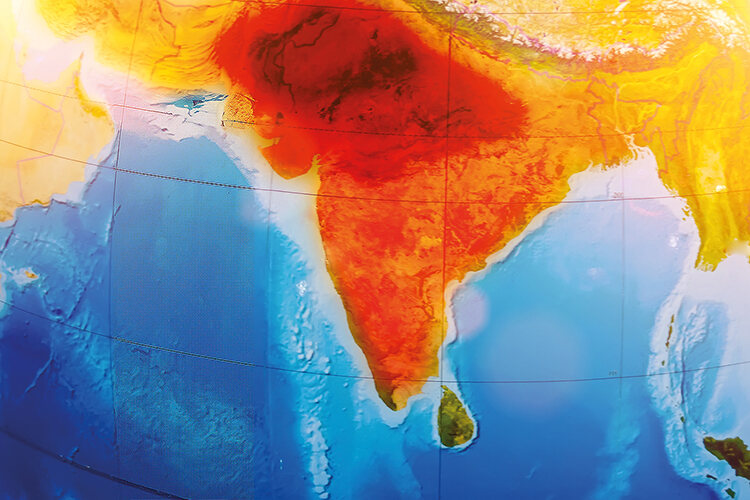


Marco Magrini on the lessons to be learned from a dystopian climate novel
Next year, in late spring 2025, a combination of high temperatures and record humidity will pummel the Uttar Pradesh region in India, killing not thousands, but millions of people. Wait – it’s not a prediction, it’s just the opening of The Ministry for the Future, a 2020 novel by sci-fi author Kim Stanley Robinson. The novel has received praise for its realistic depiction of the unfolding climate crisis and its scientific accuracy.
Early this April, extreme heat scorched West Africa for real. In Bamako, Mali, a 48.5°C temperature and 102 deaths were recorded. On the other side of the continent, in Kenya, unprecedented rains have claimed lives and livelihoods. The World Meteorological Organisation, while sounding the alarm, reckons that a ‘waning El Niño event is playing a role’. The phenomenon, which made a huge expanse of the Pacific warmer, is expected to be gone by summer. At that point, the conundrum now puzzling the climatological community could potentially be solved: were highly abnormal temperatures in the last 12 months caused by terrestrial cycles, or are they the early sign of runaway warming?
The novel – warning spoiler alert – has an optimistic tinge. Humanity manages to survive. Having sensed the impending extinction risk ahead, the United Nations formally establishes a Ministry for the Future, a cabinet of experts entrusted with finding global solutions to a global threat. Among many devised solutions, there’s a new cryptocurrency backed by all the world’s major central banks, the ’Carboni,’ which is used to promote and finance the removal of carbon dioxide from the atmosphere. If a bit weird, it would be just another way to put that well-deserved price on carbon emissions.
The Economist reports that the European Trading Scheme (ETS), the world’s leading attempt to put a price on carbon, is finally bearing fruit. The price of a permit to spew out one tonne of CO2 now hovers at around a sound €70. ‘By 2023,’ the magazine reported, ‘sectors covered by the ETS, such as industry and electricity generation, had reduced emissions by 47 per cent, compared with 2005 when the scheme was launched.’
Last year, those emissions fell by a whopping 15.5 per cent. The scheme has been toughened up and new sectors to be covered will be added soon. That being said, a carbon price remains a regional, not a planetary, affair.
Kim Stanley Robinson’s fiction explores several technological endeavours needed to ward off disaster, such as pumping meltwater from below Antarctica’s glaciers in order to avoid their collapse and to prevent gargantuan sea-level rise. There’s also the move by the Indian government – contested by other countries – to start spraying sulphates into the atmosphere in order to reflect solar radiation and prevent another deadly heatwave. In the book’s plot, a huge deployment of renewable energy sources will also help humankind out, thus properly suggesting that multiple technologies will be needed, along with their continued innovation.
Let’s take the real-world case of batteries. We usually think of them powering our personal electronics but, in a recent report, the International Energy Agency revealed that the energy sector now accounts for more than 90 per cent of annual lithium-ion battery demand – they fill the gap left by wind and solar, which, unlike fossil and nuclear sources, can’t run all the day long. Their price has fallen by as much as 90 per cent since 2010 and there’s still plenty of room for it to keep on falling. It will be a crucial step towards the energy transition.
However, the gap between fiction and reality remains wide. While some of the tricks imagined by The Ministry for the Future may play out one day, our climatic destiny has largely yet to be determined. As professor Vaclav Smil, a most prolific science writer, wrote in his Global Catastrophes and Trends: ‘Retrospectives reveal that most of the truly long-range forecasts (spanning at least one generation, or 20-25 years) turned out to be useless within years or even months of their publication.’ The future must be managed, not dreamed.
In the novel, the Ministry for the Future is established in January 2025, out of a common and shared concern from the world’s nations. When seen from mid-2024, in the midst of a geopolitical quagmire, that sounds like real science fiction.



